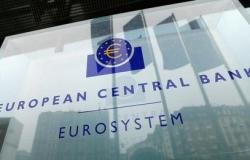
Although it has already subsided in much of the region, inflation has put pressure on household finances in Latin America and has increased the price of essential products such as food, pushing up the budget to cover basic costs.
Paraguay is currently the cheapest country to cover basic costs excluding housing rent, with an estimated US$446 per month, according to a report by Statista Research Department.
After Paraguay are Argentina (US$469), Bolivia (US$481), Peru (US$495), Colombia (US$527), Ecuador (US$541), Brazil (US$553), Nicaragua (US$553.3) and Venezuela ( US$601).
In another block are Guatemala (US$638), El Salvador (US$645), Honduras (US$645.2), Chile (US$703) and Mexico (US$706). And the most expensive countries to cover basic costs are Panama (US$779), Costa Rica (US$865) and Uruguay (US$887).
“Paraguay is a country that has one of the lowest import tax rates in Latin America. Paraguay made the decision to become an axis and integrator of larger economies with the rest of Latin America and this has had a direct effect on the country’s economy due to the fact that it is an open economy with greater competition, so prices are cheaper,” Leonardo Trevisan, professor of International Relations at the ESPM in Brazil, told Bloomberg Línea.
Leonardo Trevisan, Brazilian economist and specialist in Geopolitics, explains that Uruguay is an opposite economy to Paraguay, in the sense that it is a very closed market, like most Latin American countries, and its economy is much more oriented to the agricultural sector.
“Uruguay has very little industrialization and its economy is more oriented to the agricultural sector and is very protected, which also has to do with its monetary profile. As it is an export economy, it makes every effort regarding its exchange rate so that it makes life easier for exporters,” he noted.
From his point of view, this characteristic of a closed economy largely explains the high price of life in Uruguay, although he points out that it is a fairly common phenomenon throughout Latin America, citing the specific case of Brazil.
“If we look at the case of Brazil, contrary to what we imagine, it is a very closed economy, with high tax rates for various products, which in practice protects national structures, but makes the cost of living more expensive (…). This is a phenomenon that is not only in Brazil. It is present in most Latin American countries, with some exceptions, such as Paraguay,” he noted.
What influences the cost of living?
Federico De Cristo, professor at the Faculty of Business Sciences at the Universidad Austral in Argentina, says that differences in the cost of living can be explained by the size of GDP per capita, since countries with a higher one tend to have a higher cost of living level measured in dollars. Among other factors, he refers to the tax burden of the markets, which is reflected in prices and increases the cost of living.
In the case of Argentina, it points out that the rapid changes in the exchange gap between the official dollar and the parallel dollar contributed to increasing the cost of living. He also refers to “the rapid increase in regulated prices that had been repressed for four years” and the PAIS tax, which “makes the purchase of official currency more expensive for importers, even for imported inputs that make local production more expensive.”
He explains that Paraguay has low public spending, with a limited social security system and spending on health and education. Other countries in the region have greater spending in these areas, which leads them to set higher taxes to balance public accounts, according to De Cristo.
“Higher taxes increase prices and the cost of living. Furthermore, some countries have a large gap between the salary cost of companies and what the worker actually earns, in taxes, contributions and other deductions, which makes the salary cost of production more expensive,” he explains to Bloomberg.
On the other hand, he points out that it is necessary to understand what consumption basket is considered to calculate the cost of living. In countries with high poverty and a poorly regulated labor market, with relatively low wages, producing services can be relatively less expensive than in countries with higher wage costs.
The professor from the Austral University also points out that the productivity of each country must be taken into account, which can explain why areas with high salaries can produce at reduced costs, while others with low salaries have uncompetitive costs due to low productivity.
The phenomenon of inflation on the cost of living in Latin America
Among the main regional markets, the consumer price index in 2024 would be 160% in Venezuela; by 149.4% in Argentina; at 5.7% in Uruguay; in 5.3% in Colombia; in 4% in Paraguay; by 3.8% in Brazil; in 3.5% in Mexico; in 3% in Chile; by 2.4% in Peru and by 1.5% in Ecuador.
Leonardo Trevisan, from the ESPM academic institution in Brazil, also refers to the increase in the cost of living globally due to the inflation that was unleashed after the pandemic and global events such as the war in Ukraine, which has mainly made energy sources more expensive.
He also cited the example of the fertilizer sector, essential for the region’s agricultural production, which was impacted by inflation and the effects of the war in Ukraine, contributing significantly to the increase in the cost of food on the continent.
In the case of Latin America, it also refers to the internal factor of the weakness of several of the currencies of the main regional markets in comparison to the price of the dollar. “The dollar has risen and this has had a direct impact on the cost of living in these countries, because they depend on it,” he told Bloomberg.
According to the most recent projections of the International Monetary Fund (IMF), inflation in Latin America and the Caribbean would be 16.7% in 2024, above the 14.4% in 2023 and 14% in 2022. The agency’s forecasts suggest that inflation would reach 7.7% in 2025 and in 2029 it would reach 3.6%.
If you want to receive this and other information on your cell phone, download Telegram, enter the link https://t.me/albertorodnews and click +Join.
Alberto News





